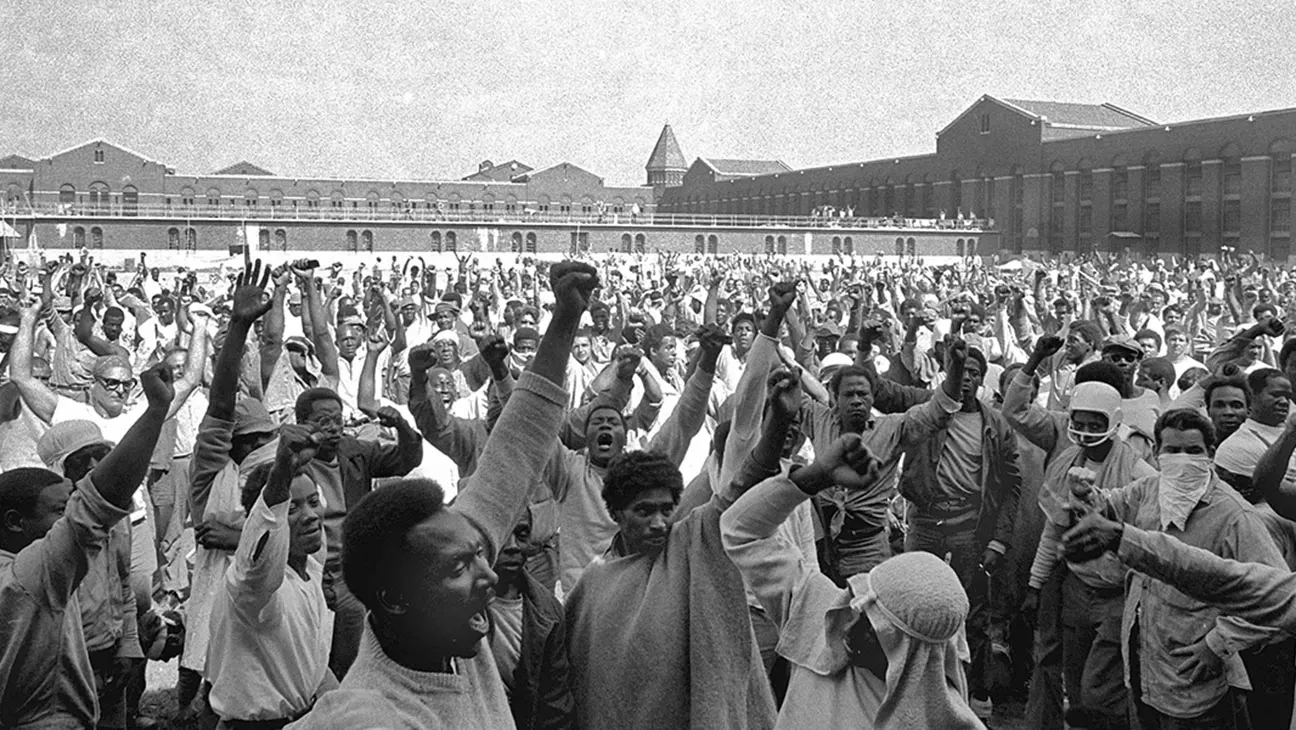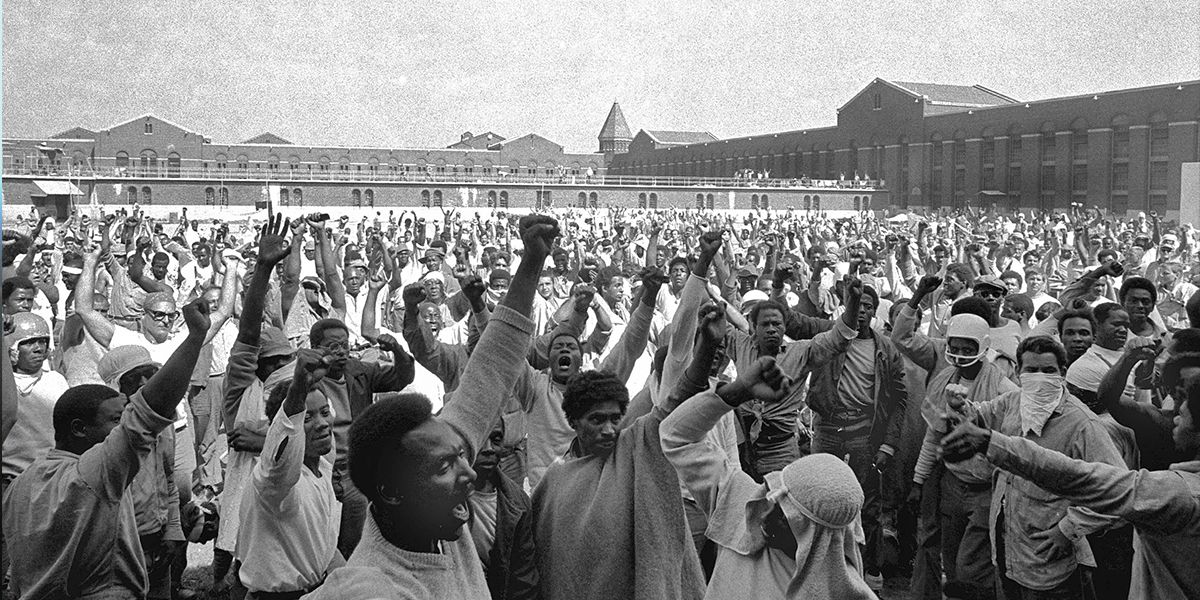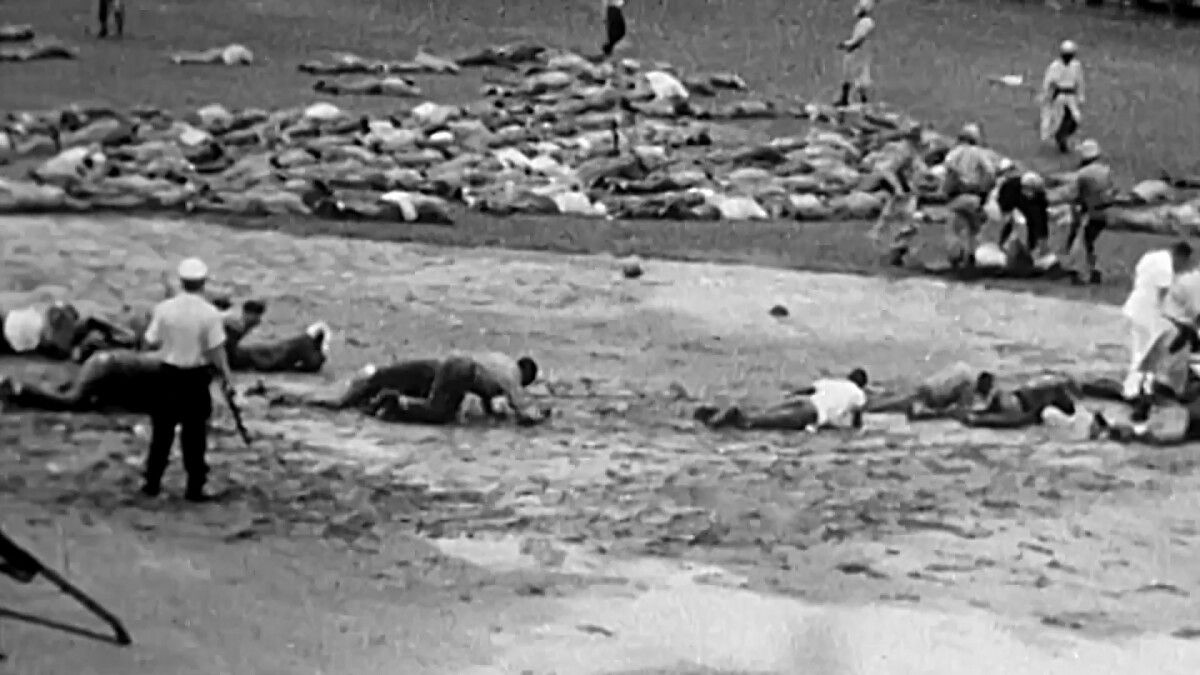"It didn't have to be that way," Clarence Jones opines near the end of Attica, the new documentary about the largest prison uprising in American history. Those simple words speak centuries of wisdom about violence and tragedy; they are the words of those who recognize suffering or injustice, yet still believe that humanity is capable of something better. They are simultaneously words of despair and hope.
Stanley Nelson has directed numerous, matter-of-fact documentaries about the despair and hope felt by marginalized people who have suffered under the naked fist of power. Whether it's The Murder of Emmett Till, the massacre at Wounded Knee (as a part of the We Shall Remain series), the Freedom Riders and civil rights activists of 1961, or the extensive targeting of The Black Panthers by the FBI, Nelson is always fascinated by the powerful ability of cinema to document and memorialize tragedy, to personalize history, and to preach to the future about the past.
Attica is no different, aside from being co-directed by first-timer Traci Curry. The film is a concise retelling of the five days between Sep. 9, 1971 and Sep. 13, when over one thousand inmates took control of their prison in upstate Attica, New York to demand better living conditions and more humane treatment. Cinda Firestone directed a fine documentary on Attica in 1974, but its obscurity and dated reporting mean that this new, deeply researched film is more than welcome in these times when cinema has a heightened awareness of police brutality and prison reform. Incorporating archival news footage from both inside and outside the prison, along with state police footage shot on early Portapaks and contemporary interviews with meticulously located survivors on every side, the film does an excellent job explaining the event with a sense of urgency and prescience.
"We Got the Joint!"
Nelson details the situation using a five-act structure to tell the story of five days. After a startling introduction which brings the viewer directly into the riot, the film functionally begins with day one, explaining just how these events came to pass. While most correctional facilities in 1971 were rather inhumane, the Attica prison was abhorrent; known as 'The Last Stop,' it was considered to be the place people of color were sent to before never being heard from again. Its living conditions were notoriously awful, as prisoners and human rights activists have spoken about at length-- one roll of toilet paper per month, 16 hours of the day spent inside a cell, the cost of each meal averaging twenty cents, Muslims being fed pork and refused religious freedom, with no medical attention of any substance, all while the (all-white) guards routinely beat and tortured (the 70% BIPOC) prisoners to oblivion.
After the deaths of several black prisoners, both in Attica and around the country, the imprisoned men began peaceful protests, uniting in solidarity for hunger strikes and requesting to meet with the administration. Lists of 27 requests for improved conditions were ignored by the commissioner, the only response coming from the warden when he retaliated by further restricting reading materials and personal belongings in the prison. Repeatedly ignored, talk of something more violent began to spread audibly enough that the guards were frightened and concerned. These correctional officers brought the situation to their higher-ups, but they too were ignored. Then it happened, like some maelstrom whipping everyone into a frenzy. Prisoners with pipes, shanks, sticks, and anything else they could find overpowered the guards, seized their keys, and pronounced pandemonium. "We got the joint," thousands shouted.
By noon, 1,300 prisoners took 42 hostages and controlled half of Attica, coalescing mainly in the central yard, known as 'Times Square.' Nelson does a smooth, efficient job relaying all of this information rather quickly so that he can get to the meat of the film-- those surreal days and nights spent in 'Times Square.' "It was a moment of exhilaration to somehow have control over your life," one former prisoner says, and that excitement can be seen in the archival footage. Joyous chants, raised fists, laughter and singing all rang out that first night, as the inmates drank prison wine and stared up at the stars for the first time in decades, for some. One man hadn't seen the moon in 22 years.
Freedom Manifested
Aside from the personal and revealing interviews, editing is the most important feature of Attica, and the emotional development of the film is held together by it. Nelson and Curry obviously delight in piecing together the footage which shows these inmates celebrating a rare, seemingly impossible moment of freedom, no matter how precarious it may be. The prisoners managed to create better living conditions in one day than the state had in decades, as medical services are set up by former doctors, tents are erected, latrines are dug, and elections are held block by block to determine leaders. Once they felt free, even within a literal prison, a kind of organic society formed within a matter of hours. Inspired by the Black Panthers and earlier prison rebels like George Jackson, a manifesto was written by the next day.
"There seems to be a little misunderstanding about why this incident developed here at Attica, and this declaration here will explain the reasons." So begins the manifesto of demands written by the prisoners and read onscreen by L.D. Barkley, a courageous 21-year old who had been sentenced to just 90 days in the facility.but wanted to be a voice for the voiceless and step up to lead; he would be killed for it soon after. The declaration is so succinct and powerfully representative of the inmates that it should speak for itself here--
The entire incident that has erupted here at Attica is not a result of the dastardly bushwhacking of two prisoners Sept. 8 of 1971, but of the unmitigated oppression wrought by the racist administrative network of this prison throughout the year. We are men! We are not beasts and we do not intend to be beaten or driven as such. The entire prison populace — that means each and every one of us here — has set forth to change forever the ruthless brutalization and disregard for the lives of the prisoners here and throughout the United States. What has happened here is but the sound before the fury of those who are oppressed..
"If we can't live as people, we will die as men," went the rallying cry of one inmate, a sentence which would become prophetic. Nelson and Curry spend an understandably long time tracking the negotiations which took place, but an element of hopelessness creeps in halfway through the film, regardless of how aware one may be with the history. This may be due to the fact that one guard wounded during the riot (but then cared for by the prisoners) would pass away a few days afterwards, or it may merely be because resistance to power is usually futile. Despite the ephemeral beauty of their momentary freedom, eventually the prisoners (and the audience) realize the power of the system in which they exist; "'law and order' does not permit any challenge to its authority," one man says. This inexorability may lead some to find the film pointless; regardless, this march to tragedy is important and well directed.
By Any Means Necessary
The remainder of the film is absolutely harrowing and some of the most difficult and infuriating cinema of the year. The directors choose to let the sound of gunshots and screams play out, sometimes just slightly, for nearly ten minutes as security footage, eyewitness testimony, and still photography tell the gruesome denouement to the tale. "You will not be harmed," the megaphone shouted. Inmates placed their hands above their heads but were gunned down, 33 killed and 85 badly wounded. Ten hostages were murdered, all indiscriminately shot to death by the police. The rainwater resting in the square ran red with blood. Retaliation was brutal as survivors were forced to crawl naked through the latrines they had dug, through their own excrement, before being beaten and tortured. "White power," some of the police yelled.
"It didn't have to be that way," Clarence Jones said, and he would know-- he was the personal counsel, speech writer, and friend of Martin Luther King, Jr., who had been assasinated just three years prior to the Attica massacre. The directors use Jones and other interviewees as conduits here to explain the tragedy and lament the decisions which were made, possibly in hopes of influencing similar future decisions. The film, by implication, forces viewers to imagine a world where this wouldn't happen, a world where a non-violent solution could be worked out; to imagine, hope in hand, the possibility of 'Power' relinquishing parts of itself in order for people to regain some dignity and humanity; to imagine the naked fist of power loosening its tight grip and opening up, blossoming into a welcoming handshake. This didn't happen in '71, but it doesn't have to be that way again.
To learn more about the fight for the human rights of prisoners, prison reform, and how to get involved, visit the American Civil Liberties Union's National Prison Project at ACLU.



